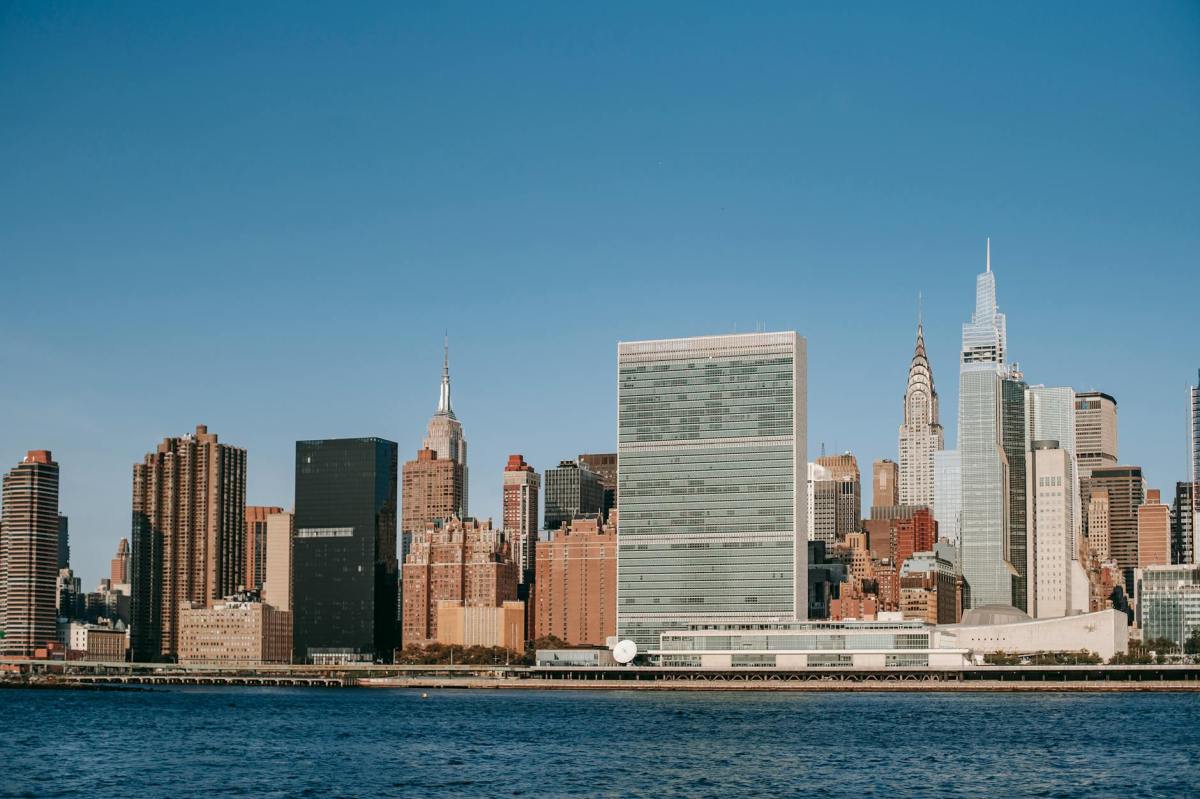- The United Nations was established after World War II, succeeding the League of Nations.
- After the incorporation of South Sudan in 2011, the UN has 193 Member States.
- On 24 October 1945, the Charter of the United Nations came into force, considered the founding moment of the UN.
The birth of the UN took place on 24 October 1945, a day that is therefore commemorated as United Nations Day. But before this supranational organisation came into existence after the Second World War, there was another, the League of Nations, which also emerged after a war of global magnitude: the First World War.
International organisations in the 19th and early 20th centuries
While it is true that the League of Nations is considered the forerunner of the UN, as we shall see below, the creation of supranational organisations in the second half of the 19th century was a first step in international progress and integration.
The birth of the International Telecommunication Union (in 1865, as the International Telegraph Union) still has repercussions today, since the date of its creation – 17 May – is celebrated as Internet Day.
The aforementioned ITU or the Universal Postal Union (from 1874) are much earlier than the United Nations itself, of which they are now specialised agencies.
Another international organisation of this era is the Permanent Court of Arbitration, which emerged after the International Peace Conference in The Hague in 1899.
League of Nations: 1919-1946
At the end of the First World War, the League of Nations was founded in 1919 to ‘promote international cooperation and to achieve peace and security’ in the wake of the Treaty of Versailles.
Based in the Swiss city of Geneva, the organisation grew to more than 60 member states, although the fact that a new international war broke out at the end of the 1930s proved the failure of the organisation’s main founding objective.
It officially ceased to exist on 20 April 1946, handing over its assets to its successor, the UN.
San Francisco Summit, origin of the UN
The end of World War II and its aftermath led to the holding of the United Nations Conference on International Organisation in San Francisco.
The two months of work, between 25 April and 26 June 1945, ended with the signing on that day of the Charter of the United Nations, a document that would enter into force on 24 October of that year, officially bringing the UN into being and establishing the principles and objectives of the UN, promoting peace, international security, human rights and cooperation. An international treaty binding on all Member States.
First steps of the United Nations
The birth of the organisation at the end of 1945 brought a milestone start to 1946.
For example, the first session of the General Assembly was held on 10 January of that year at Central Hall in Westminster (London) with the participation of the 51 nations that then made up the organisation.
Exactly one week later and also in the London capital, the first meeting of the Security Council took place, a session at which its rules of procedure were established.
Another seven days later, on 24 January, the General Assembly adopted its first resolution, A/RES/1(I), under the title ‘Establishment of a Commission to study the problems arising from the discovery of atomic energy’.
February of the same year brought the novelty of the proclamation of the organisation’s first Secretary-General, the Norwegian Trygve Halvdan Lie, who held the post until 1952.
UN Member States
Over the course of its history and from the original fifty or so, the UN has added countries to its current membership of 193.
50+1 founding Member States
The founding States were the 50 that were present at the summit in California and signed the Charter, although Poland joined later, bringing the official number of founding countries of the UN to 51.
Fifty countries, including the five members of the Security Council – China, the United States of America, France, the United Kingdom and the USSR, later Russia – and a wide variety of countries from all continents, such as Argentina, Australia, Belgium, Brazil, Ethiopia, the Philippines, Lebanon, Liberia, New Zealand, Peru, Turkey, Venezuela and Yugoslavia.
1961: the number of Member States surpassed 100
The trickle of new members was almost annual until 1961, with the arrival of Mauritania, Mongolia, Sierra Leone and Tanganyika (now Tanzania, after its unification with Zanzibar), when the number of Member States surpassed 100.
The processes of decolonisation and the consequent independence of many new states in the 1950s and 1960s meant that the growth in the number of Member States continued apace during these and the following decades.
The 1990s and 2000s
The fall of the Iron Curtain and the disintegration of the Soviet Union, Yugoslavia and Czechoslovakia also triggered a new wave of new states joining the UN during the 1990s.
The 20th century ended with 189 countries joining the United Nations, a number that has only grown since then with the accessions of Switzerland and East Timor in 2002, Montenegro in 2006 and South Sudan in 2011.
South Sudan, the last state to join the UN: 193rd
As we have just mentioned, 2011 saw the latest addition to the list of UN Member States.
South Sudan joined the organisation on 14 July of that year, following the formal separation of Sudan five days earlier after a referendum held under the supervision of the international community in January 2011.
FAQ
On 24 October 1945.
193.
South Sudan, in 2011.
The League of Nations.
Between 1919 and 1946.
In New York.










